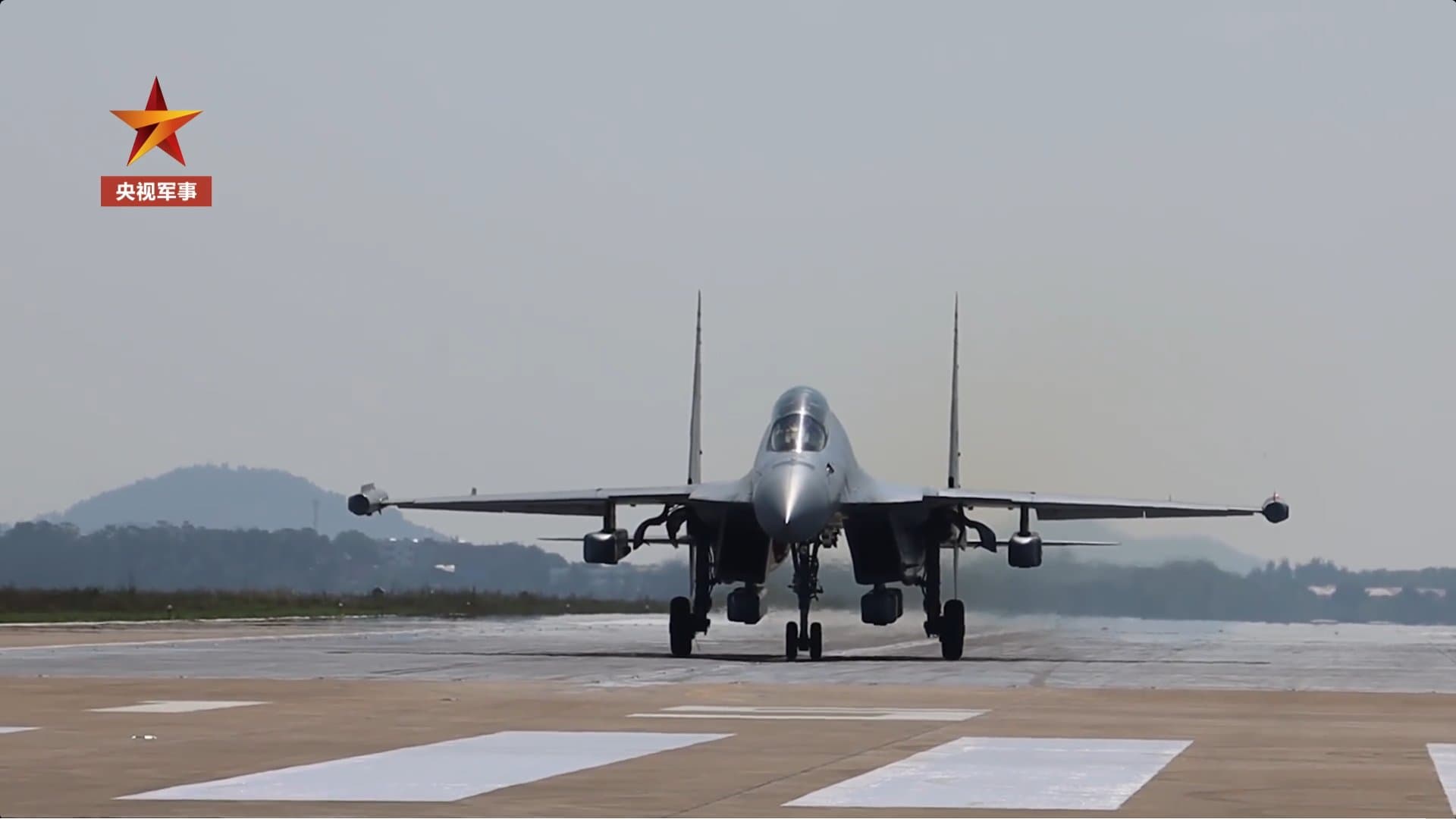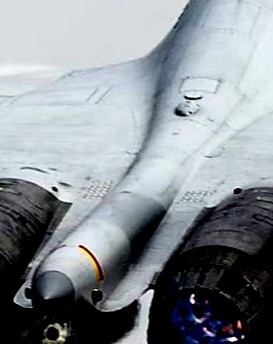- Yes
- No
Background and History
J-15's History
Initial Deal:
The history of China’s first carrier borne fighter is directly connected to failing indigenous designs and the successful production and deployment of the J-11 and J-11A. In fact, not long after the acquisition of what eventually became the Liaoning, China sought to fill the hangars of this newly reconstructed aircraft carrier with Su-33s. Allegedly, by 2006 there were talks between China and Russia about a potential order of Su-33s. The rumors became reality once in that same year, ahead of the Zhuhai airshow, Lieutenant General Aleksander Denisov publicly confirmed that China had approached Russia regarding the possible purchase. The details of the purchase seemed to be the acquisition of 2 initial aircraft for testing purposes and a later purchase ranging from 12 to 48 aircraft.
The T10K-7:
Amidst deal talks, filled with growing suspicions from the Russian government, China opted instead to purchase a non-airworthy (actually pre-production) T10K-7 from Ukraine. The aircraft (among other sea equipment) was transferred from Saki, Ukraine to China where SAC started studying it. The reasons for this decision are to this day rather unclear, what we know is that there were multiple disagreements when it came to the deal. The formula of a win-win situation wasn’t working this time (compared to the past purchase of SU-27SKs) due to growing concerns over intellectual property and potential monetary losses from Russia. It is also acknowledged that the offered Su-33s didn’t meet China’s requirements due to outdated avionics and surplus content.
Indigenous Development:
Regardless of the real reason for the collapse of the Su-33 talks, development of what later became the J-15 officially began in 2006 under the guidance of Programme Chief Sun Cong and Deputy General Designer Wang Yongqing. Structurally, the J-15 is a true hybrid between what China had at the time and the new tech that became available thanks to the T10K-7, namely canards, arrester hook and a heavily reinforced undercarriage with long-stroke shock absorbers and twin nosewheels. Some parts of the J-15, of which we can mainly name the flaps, flaperons, tail and wings share massive similarities with the Su-33. On the other hand, the Airframe is based on the reinforced and revised structure of the J-11B, with the usage of modern composite materials in areas like the vertical fins to reduce weight.
The New Shark
The First Prototypes:
The possibility of an EW version of the J-15 arose as soon as the J-16D, EW variant of the J-16, got unveiled. This almost seemed like an obvious option for the PLANAF due to the presence of prerequisites such as the J-15S and J-16D. Although shrouded in mystery, as per usual when it comes to Chinese prototypes, it was rumoured that the prototype J-15D took off for the first time on the 25th of October 2016. This date is particularly important as it marks roughly a year since the other EW flanker took to the skies, the J-16D.

Eventually more prototypes were built and began testing soon after. Not much is known about the testing phase due to the secrecy of the program but pictures did end up leaking to the public; either via satellite pictures or slip ups by the CCTV media. Eventually, thanks to more permissive behaviors and some lucky photos, the program seemed to have continued without major issues well into the 2020s, with photographs that showed the classic green/yellow primer used on maritime vehicles by Shenyang.

The Zhuhai 2024 Revelation:
Not much was known about the program, the only known specifications were the similarities between the J-15D and J-16D as well as the little details that instead made the Shark slightly different compared to the land based version. Some minor differences were primarily the different antenna arrangement and different versions of wingtip EW pods.
Thanks to Zhuhai 2024 the project finally came to light by the introduction into service of the two new Sharks, the T and D versions. These two were supposed to substitute the older J-15 and J-15S, therefore giving the Chinese carries a much more potent set of aircrafts to work with.

Thanks to much higher details and availability of information, a lot more is now known about the EW variant of the Shark, such as the full antenna arrangement, indeed a different kind of EW wingtip pods compared to the ones of the J-16D, a similar design choice to the J-16D with both the gun and the IRST removed to make more space for EW equipment, a slightly smaller radome, hinting at a possible similar radar set to the J-16D one. An interesting factor was the lack of weapons on the J-15D during Zhuhai’s airshow, which always showed the Shark with the full EW setup under the main pylons, a configuration that we’ve come to know, once again, thanks to the J-16D.

It is also highly likely that we’ll see plenty of new info, hopefully more weapons being shown on it, coming out in the next few months thanks to static displays and CCTV coverage, therefore bear with me and feel free to add any sort of discovery that you might find on the J-15D.
Technical data
Specifications
This section might need to be updated as we get newer information
Crew: 1
Length: 21.9~ m
Wingspan: 14.7~ m / 7.4~ m folded
Height: 5.92~ m
These stats of the weight are more than likely underestimates due to lighter airframe and better engines
Empty Weight: 17.500~ kg
Gross Weight: 27.000~ kg
Max Takeoff Weight: 33.000~ kg
Powerplant: WS-10H (H most likely stands for Hǎi 海, Sea) / Powerplant: 2 x AL-31F
Spoiler

Max Speed - Mach 2.4 (at altitude)
Rate of Climb - 325 m/s
Range - 3,500 km
Service Ceiling - 20,000 m
Armament
1 x Type 30-4 30mm
12 hardpoints:
- 2 tandem under the fuselage centerline
- 2 under the air ducts
- 6 under the wings
- 2 on the wingtips
** Technically, we could see more hardpoints due to the Chinese double rack pylons, but these are yet to be spotted on flankers.

4 x PL-8
4 x PL-10
8 x PL-12
8 x PL-15
2 x PL-17 (Based on other Flankers being able to, speculation)
KD-88 ASM
YJ-83K AShM
YJ-91 ARM
RKZ-930 jammer pods
AKK-802K guidance pod
JDC-01A targeting pod
YINGS-III targeting pod
low-drag general-purpose bombs
90 mm unguided rockets
Avionics
AESA Radar (The radome shares a lot of similarities with the J-16D one)
3rd gen. IRST and Laser rangefinder linked to HMS
NVG
2nd gen. RWR
MAW
Fully digital Avionics suite
HMD
Ballistic Computer
Chaff/Flares
Photos
Spoiler
New insignia

Radome


Engines and Hook


Wingtip Pods


Top J-16D, Bottom J-15D:

Sources




























